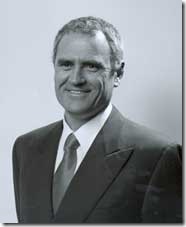
Photo: Dr Ken Henry, Secretary, Australian Treasury
For someone like me, the current flutterings in the Canberra dovecotes over the fall-out from the Australian Government's bank deposit guarantee are fascinating.
I do not want to comment on the detail of the saga - that has been well covered in the mainstream media. However, I thought that I might usefully make some observations on some of the issues raised. I also thought that I might add some context for the benefit of international readers interested in Australian developments. I have added links at the end of the post.
Background
In Australia, the three main sources of official advice to the Government on the macro economy are the Commonwealth Treasury, the Reserve Bank and the Department of Finance.
Treasury and Finance are both Departments of State. Treasury is concerned with the economy as a whole and provides a range of economic advice on both macro and micro issues. Finance focuses especially on budget issues. When I joined Treasury, the two Departments were in fact one - they were split because the then Government saw Treasury as too powerful. As an acting SES officer at the time, I still remember the final drinks put on by Departmental Secretary Fred Wheeler as the unified Department dissolved.
Australia operates under a Westminster system of Government. Under our system, the national Government is formed by the party controlling the lower house of Parliament, the House of Representatives. The Government appoints ministers who control portfolios, areas of responsibility. Within those portfolios, the Departments of State are responsible for the provision of advice to ministers and for the implementation of ministerial and Government decisions.
Traditionally, the public service is seen as politically neutral, serving whatever Government is in power. This ethos is central to the Australian tradition. Advice provided by public servants to their political masters has traditionally been seen as private advice. Governments make decisions on that advice, but also factor in a range of other considerations and sources of advice.
In contrast to Treasury and Finance, the Reserve Bank is an independent authority responsible, among other things, for the stability of the currency and for monetary policy. The decision to create an independent Reserve Bank, something that I support, created a divide between fiscal policy (Treasury) and monetary policy (the Bank). This has created its own tensions and policy difficulties.
There has been concern in Australia about what is seen as the erosion of the Westminster system. One element of that has been a decline in the power of Parliament as compared to the Executive. A second element has been the perceived politicisation of the public service, the transformation of the service from a body serving any Government to one serving the Government in power at the time.
In July of last year, a speech that Dr Ken Henry gave to Treasury staff was leaked to the media. 
This speech took place against a background of the announcement of a new plan by the Howard Government to save the Murray-Darling River system. Spearheaded by Minister Turnbull, now Opposition Leader (photo), the development of the plan had sidelined Treasury.
Dr Henry's speech re-affirmed Treasury's role as a source of independent advice, advice that needed to take Government views into account,but should be delivered without fear or favour. Minister Turnbull was dismissive of it. He said:
This is not a narrow or arid economic analysis issue, this involves a lot of big questions, it involves dealing with practical people, people who've got a lot of dirt under their fingernails, who work all day in the bush and know how things work. And they're the people I'm spending my time consulting with and listening to.
Dr Henry was punished for this episode. It was only later that press reports recorded the apparent fact that his performance bonus was withheld.
Following this imbroglio, Opposition Leader Rudd announced his intention to restore the Westminster system. Then, in announcing his new ministry, he stated his intention to restore Treasury's role with a special focus on micro-economics reform.
Now track forward. When the Government announced its new guarantee package for bank deposits, the opposition initially supported it. As the problems with the package become clear, the opposition switched its position, focusing on reported differences in advice between the Reserve Bank and Treasury. This led to a seven hour grilling of Dr Henry by the relevant Senate estimates committee.
Returning to institutional matters, the Senate is Australia's upper house. Originally conceived as a states' house, the Senate has evolved into a house of review largely because Governments of all persuasions have not been able to obtain majorities there because of the state based proportional representation system used to elect the senate.
Within the Senate, the estimates committees formed to review Government expenditure have come to play an especially important role because they provide an opportunity to review the detail of Government activity.
The opposition's attack in estimates committee focused on the differences in advice between Treasury and Reserve Bank. The opposition has also focused on the failure to model the effects of the economic stimulus package. Now the opposition has rejected the bank guarantee scheme as a clear failure because of its distorting effects on the money market.
The Government itself is moving to modify the announced scheme to try to compensate for the distorting effects.
The issues
Mr Turnbull is an intelligent man with close links to the merchant banking community. I have no doubt that he quickly understood the adverse effects of the bank deposit guarantee package.
For the benefit of international readers, the decision by the Australian Government to guarantee all deposits of Australian banks, building societies and credit unions was introduced in part because decisions by other countries to provide guarantees had affected the competitive position of Australian banks. However, it then had the effect of of encouraging flows of funds from non-guaranteed bodies such as mortgage funds to guaranteed bodies. It also adversely affected the operations of the inter-company money market since no guarantees were in place here.
Dr Henry states that The Treasury and Reserve Bank supported the initial package.I have no reasons to doubt this, although it still leaves open the issue of nuances in the form of advice. I also have little doubt that the Reserve bank did provide advice as soon as the problems became clear. All this said, there are some things in the current situation that concern me.
The first is the apparent assumption that official advice must be made available. This, to my mind, is a breach of the Westminster tradition. Governments make decisions and can be attacked on those decisions. The issue as to whether or not they accepted advice is quite different. Mr Turnbull and his colleagues seem to be implying that the failure to accept advice, if that advice existed, is a fault. This is not a view Mr Turnbull took as minister.
The second is the apparent rush by the Government to decision. Here I have complained quite consistently about what I see as the tendency of the Rudd Government to try to do much, to come to sudden positions.
Now the Government might argue, and I would accept the argument, that urgent action was required. Here I do not accept the argument put forward in the context of the stimulus package that the outcomes of every set of decisions must be modelled first. This argument misunderstands the purpose and limitations of modelling.
That said, I am concerned that the bank deposit guarantee package now requires significant amendment to fix up its flaws. You do not require detailed modelling and testing to follow through the likely implications of a policy change - in most cases, rough back of envelope stuff will suffice. So this really should have been done.
The third issue, and one that I find quite complicated, is the question of when it is appropriate for the opposition (and the media) to comment.
The stimulus package, the really big dollar item in actual spend terms, seems to have attracted little substantive comment. On the other hand, commentary on the guarantee package seriously worried me in terms of the safety of a little bit of money this family has in a cash management trust. Should we, too, rush to safety?
My point is that I am not sure that the public comments on the guarantee package are very helpful. I would have thought that the best course was to let things ride. There will be time for comment later.
A little later
I ran out of time on this post. Thinking about it and listening to Parliament in the car, I am far from satisfied about my own discussion of the issues.
To begin with, given global responses, I am not convinced that the original decision to provide the guarantee was, of itself, wrong. I can understand the desire for quick action, while we do need to protect the global competitive position of our banks.
My instinctive reaction at the time was that, given the strong position the Australian banks already held, the guarantee was likely to signficantly advantage them in global terms. I stand to be corrected here, but this is still my gut judgement.
I remain concerned that the flow on effects in the Australian financial market were not sufficiently addressed. The imposition of what the opposition calls a tax, the Government an insurance premium, on deposits (I do not have the details available) is not, as Dr Henry suggested, fine tuning details, but a significant change.
My point on media and opposition comments about problems with the guarantee package probably seems obscure. My point is that for a period those comments actually encouraged a run on other financial institutions.
Does this mean that the comments should not have been made? I suspect that, so far as the opposition is concerned, the answer is yes.
Postscript
Even as I was writing my update, the radio was carrying reports that at 4.45pm Perpetual announced that it was freezing withdrawals on a number of its funds.
These are conservative, well managed funds whose mortgages are reported to be around 50 per cent of the value of the properties involved. If my maths is correct, this brings the total of funds frozen in the last few days because of sudden cash outflows to about $A5 billion.
References
A list of posts relevant to this story follows. Like all blog posts, they are somewhat fragmentary and subject to my own biases.
The controversy created by the leak of Ken Henrys' speech to staff was carried in Australia's Treasury and the Formation of Public Policy. For the announcement of Mr Rudd's new ministry and the role of Treasury, see The Head's New Team - Mr Rudd announces his new ministry.
The Hansard record of Dr Henry's grilling is still not up. Check here to find the current status.
For comment and information on Mr Rudd's approach to policy see the following posts. Looking over them, one of my concerns with Mr Rudd has been his tendency to try to do too much, to rush to decision.
22 November 2007, The Rudd Approach - Efficiency Dividends, Axe Wielding and Razor Gangs
27 November 2007, Mr Rudd - the Head or Headmaster
5 April 2008, Saturday Morning Musings - foreign policy, Mr Rudd and the dangers of Australia's middle power status
28 April 2008, Mr Rudd and a dreadful sense of deja vu
29 April 2008, Mr Rudd and a dreadful sense of deja vu - Managerialism and systemic failure
1 May 2008, Alcopops and mixed drinks - The Head strikes
14 May 2008, Australia's 2008 budget - written from a slightly US perspective
30 May 2008, Slow down Mr Rudd, for all our sakes, slow down
22 June 2008, Is Mr Rudd being New South Walesed?
3 September 2008, Mechanistic management and Mr Rudd's education revolution
For economic analysis see the following list.
12 October 2006, Demography, Universities and the Trades in Australia. I have included this post because it includes some material on the structure of the Australian economy.
17 October 2006, Water, Drought and the Environment - working from facts
3 November 2006, Changes in Public Administration - Notes. This post, one of a series on changes in public administration, is included because it points to the importance of the stagflation of the 1970s in changing attitudes to public administration and policy. We are at another such tip point now.
8 November 2006, Impact of Demographic Change in Australia. While this post contains outdated material, I gave included it because it provides a simple introduction to a key longer term issue.
8 November 2006, Drought in South Eastern Australia
23 November 2006, GDP - Australia in its Region
21 December 2006, Australian Economy - Mid Year Economic Report
8 May 2007, The Australian Budget 2007 - an international perspective
5 September 2007, Australia's remarkable economic performance - the need to avoid hubris
19 September 2007, Australia's good economic management
11 December 2007, Bali, Climate Change and the Australian Economy 1
19 December 2007, The Balance of Payments, Australia and the sub-prime crisis
17 March 2008, Deposit bases, credit rationing and the Australian banks
14 August 2008, Inflation's mechanics - and the importance of improving productivity
27 September 2008, Saturday Morning Musings - longer term impact of the US financial crisis
30 September 2008, The fallacy of modern management
1 October 2008, Why the US financial package should be rejected - and why Australia will ride out the storm
2 October 2008, The international curse of the ratings agencies
8 October 2008, The international financial crisis - return of the liquidity trap?
9 October 2008, Australia and the global financial crisis
14 October 2008, Keeping a sense of perspective
14 October 2008, Australian Government's new stimulus package
14 October 2008, The Rudd economic stimulus package -a missed opportunity
15 October 2008, The Australian economic stimulus package - distributional and timing issues
16 October 2008, Paul Frijters observations on the financial data + measures of decline in Australian personal wealth
21 October 2008, Unintended Consequences - Australia's bank guarantee places pressure on the non-bank financial sector




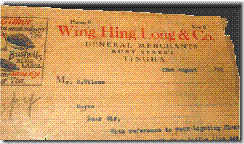
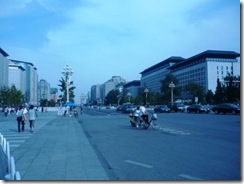




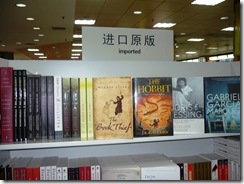
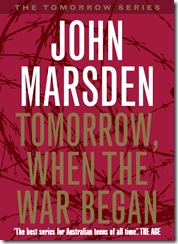 ent. The fear that we might lose our home - to be dispossessed as we had dispossessed the Aborigines - was very real.
ent. The fear that we might lose our home - to be dispossessed as we had dispossessed the Aborigines - was very real.











